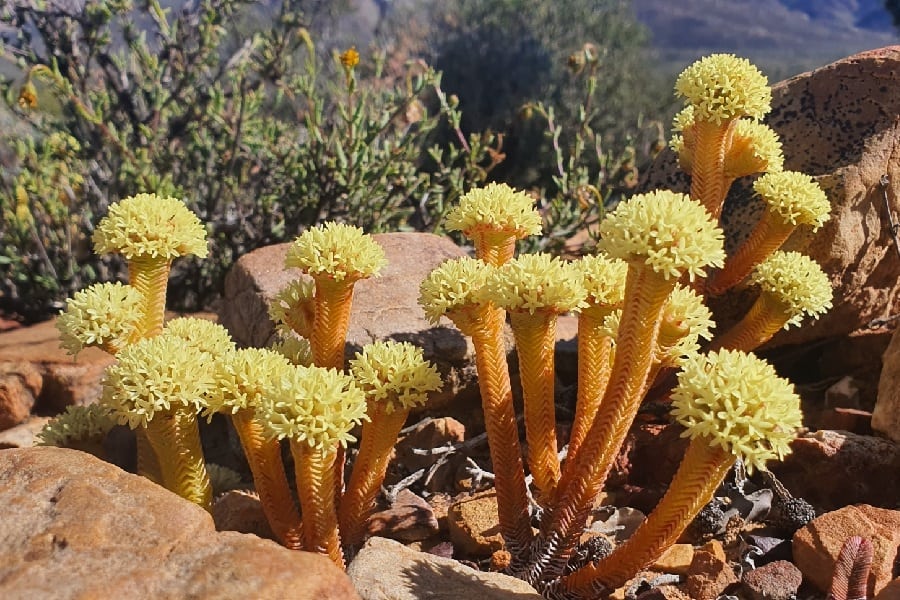Crassula pyramidalis: Characteristics and Care
Are you on the hunt for a mesmerizing succulent that will make your indoor garden the talk of the town? Look no further than the Crassula pyramidalis! With its unique stacked leaves and vibrant colors, this petite plant packs a serious punch. Get ready to fall head over heels for the succulent sensation that’s about to take over your Instagram feed!

Contents
About Crassula pyramidalis
Native to South Africa, the Crassula pyramidalis is a true showstopper. Its small, fleshy green leaves form charming columns around the stem, creating a sculptural look that’s sure to turn heads. But that’s not all – the tips of these leaf columns often develop a gorgeous pinkish hue when exposed to plenty of sunlight. To top it off, this succulent sometimes treats you to delicate white and pink blooms, adding an extra touch of whimsy to its already captivating appearance.
Related Post:
40+ Interesting Types of Crassula Plants (With Pictures)
How to Care for Crassula pyramidalis
Light
The Crassula pyramidalis thrives in bright, sunny conditions. For the best results, place it on a sunny windowsill where it can soak up those rays. This succulent loves strong, direct light, so don’t be afraid to give it some full sun. If you’re struggling with low indoor light, consider investing in a grow light to keep your Crassula pyramidalis looking its best. Position the light about 6-12 inches above the plant and leave it on for 12-16 hours per day.
Watering
Like most succulents, the Crassula pyramidalis is drought-tolerant and prefers its soil to dry out completely between waterings. From April to September (its growing months), give it a good soak whenever the soil is fully dry. During the fall and winter dormancy period, cut back on watering – just provide a light drink every few weeks to prevent the plant from shriveling up. Remember, it’s better to underwater than overwater this beauty!
Soil
For optimal growth, plant your Crassula pyramidalis in a well-draining, gritty soil mix. A blend of potting soil, coarse sand, and perlite or pumice works wonders. Avoid heavy, moisture-retaining soils, as they can lead to root rot.

Fertilizing
The Crassula pyramidalis doesn’t require frequent feeding. In fact, too much fertilizer can cause the plant to become leggy and lose its stunning, compact shape. During the spring and summer growing season, you can give it a light feeding with a balanced liquid fertilizer diluted to half-strength once every two weeks. Avoid fertilizing in the winter when the plant is dormant.
Temperature and Humidity
This succulent beauty loves warm temperatures ranging from around 65°F to 80°F (18°C to 27°C). In the winter, aim to keep it above 50°F (10°C). It prefers dry conditions and won’t tolerate excessive humidity or dampness, which can lead to rot and other issues.
Pests and Problems
The Crassula pyramidalis is generally a low-maintenance plant, but watch out for a few potential problems. Overwatering can lead to root rot and fungal diseases, so be sure to let the soil dry out thoroughly between waterings. Keep an eye out for common pests like mealybugs and aphids, and treat infestations promptly with an appropriate insecticide or organic solution.

Crassula pyramidalis Propagation Methods
The Crassula pyramidalis is a prolific little grower, and it’s easy to multiply your collection through propagation. Here are some simple methods to try:
Leaf Propagation
- Gently twist off a healthy leaf from the mother plant
- Allow the leaf to callous over for a few days
- Plant the calloused leaf in well-draining succulent soil
- Water sparingly, allowing the soil to dry out between waterings
Stem Cutting Propagation
- Using clean scissors, snip off a 2-3 inch stem cutting
- Let the cutting callous for a few days
- Plant the calloused cutting in a 2-3 inch pot filled with a 50/50 mix of sand and peat moss
- Place in a bright spot and water when the soil is completely dry
Offset Division
- Carefully remove any basal offsets (baby plants) from the mother plant with a sharp, clean knife
- Allow the offsets to callous for a few days
- Plant the calloused offsets in well-draining succulent soil
- Water sparingly until roots establish themselves
Seed Propagation
- Sow seeds in autumn, mixing them with a bit of fine sand
- Sprinkle the seed/sand mixture evenly over the surface of well-draining soil
- Mist the soil regularly to keep it lightly moist until seedlings appear
- Be patient – seed-grown Crassula pyramidalis have a slow growth rate at first
With its captivating looks and easy-care nature, the Crassula pyramidalis is the perfect plant to satisfy your succulent cravings. Bring one home today and get ready to be the envy of all your plant-loving friends!
